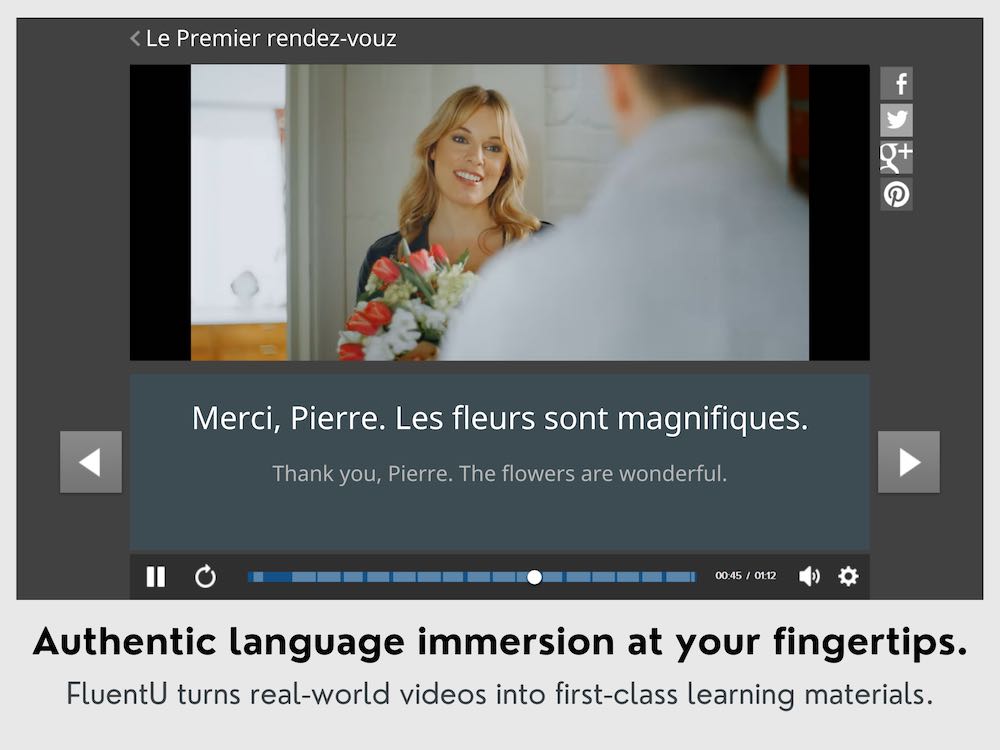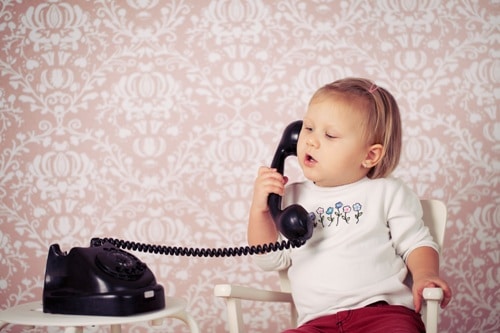
38 Fun French Baby Talk Words
Chances are, you’ve been focusing your learning activities to prepare you for communication with grown-up French folks.
That’s lovely and all, but it also means you’re missing out on one of the greatest, cutest demographics of Francophones.
And, you’re omitting a whole range of important French vocabulary—the short, fun, cutesy words that I’ll deal with in this post.
Read on to discover 38 French baby talk words, as well as some classic French children’s characters!
Contents
- 38 French Baby Talk Words
- 1. Areuh areuh
- 2. Mama
- 3. Papa
- 4. Bobo
- 5. Toutou
- 6. Dada
- 7. Dodo
- 8. Lolo
- 9. Zizi
- 10. Prout
- 11. Pipi
- 12. Popo
- 13. Caca
- 14. Doudou
- 15. Nounours
- 16. Ouah-ouah
- 17. Minou
- 18. Joujou
- 19. Maître / Maîtresse
- 20. Élève
- 21. Étudiant / étudiante
- 22. Professeur
- 23. Bibi
- 24. Hop-là
- 25. Nounou
- 26. Risette
- 27. Coco
- 28. Quenotte
- 29. Tantine
- 30. Tata
- 31. Tonton
- 32. Pépé
- 33. Mémé
- 34. Menotte
- 35. Non
- 36. Faire sisite
- 37. Casse-pieds
- 38. Jouet de bain
- Why Learn French Baby Talk?
- Understanding Schooling in France
- A Few Classic Children’s Characters to Help You Learn
- And one more thing...
Download: This blog post is available as a convenient and portable PDF that you can take anywhere. Click here to get a copy. (Download)
38 French Baby Talk Words
In this post, I’ve defined “French baby talk” as the language you’ll use to talk to babies and about babies.
1. Areuh areuh
This is the meaningless noise that babies make, like our “goo goo ga ga,” as interpreted by the French ear.
2. Mama
This is the short version of maman (mommy) which is what very young children call their mothers.
3. Papa
The informal version of père (father). When you have an ornery, feisty, poopy or vomity young Frenchman on your knee, you can say Allez hop, tu veux aller voir ton papa ? (Here we go, wanna go see your dad?)
4. Bobo
This is an “owie” but also, hilariously, the French term for a “hipster” (shortened from bourgeois bohème , or “bourgeois bohemian”).
5. Toutou
A doggy; un chien is the standard word.
6. Dada
A horsey; un cheval is the standard word.
7. Dodo
This noun refers to the act of sleeping or to bedtime. Au dodo ! means “let’s get to bed!” The life of Parisians is often described as métro, boulot, dodo (metro, work, sleepy time).
8. Lolo
Breast milk; le lait is the standard term.
9. Zizi
This is the willy or wee-wee; la bite is the slang that older kids and grown-ups use for the penis, and le pénis is the standard word.
10. Prout
This is a fart, and also, according to the French ear, the onomatopoeia for the sound you make while performing one. I personally find it a challenge to even form that French r and particular ou vowel sound with my front end.
11. Pipi
This is wee, that is, the childish term for “urine.” Grown-ups may call it la pisse , and doctors, l’urine .
12. Popo
Poop.
13. Caca
This is also poop. Faire caca is a common way to talk to children about doing number two, and you can even leave off the noun object itself to get a sentence like Il a fait dans sa culotte. (“He pooped himself,” or literally, “He made in his underpants.”)
14. Doudou
This is any blankey or cuddly object that a small child drags around. This may be used as a feminine word with some speakers.
15. Nounours
This is more specifically a teddy bear.
16. Ouah-ouah
This can be a term for “doggy,” and it’s also more commonly what the dog says.
17. Minou
This is a kitty or a pussycat. It’s used with children in this sense, but be aware that among adults it can have the same, crude second meaning as the English word, referring just to the female sex genitals (not to a woman herself) and does not sound harsh or sexist.
18. Joujou
This is a toy; the standard word is jouet . Faire joujou is the verb for “to play” ( jouer in standard French). I’ve found that T’as envie de jouer ? (Do you feel like playing?) is pretty worthless for trying to distract a sobbing young Frenchman, whereas Montre-moi ton joujou préféré. (Show me your favorite toy) works wonders.
19. Maître / Maîtresse
This is the term for “teacher” that is used by elementary school students. It’s common for children to use just these words when directly addressing their teachers, in addition to the obvious Monsieur / Madame (Mr./Ms.) [last name here].
20. Élève
This is used to describe students in elementary, middle and high schools. Elementary and preschool students are also often just referred to as les enfants (the children).
21. Étudiant / étudiante
Be careful not to use this with children; this word is generally reserved to describe university students.
22. Professeur
This is a teacher of junior high, high school and university students. Occasionally, professeure is used for a female teacher, though the Académie Française (French Academy) hates this. The shortened prof is actually the most common way to refer to a teacher at these levels, and avoids the complicated issues of feminization of nouns describing job positions.
23. Bibi
This is a baby’s bottle, and is short for biberon .
24. Hop-là
Say this when an inexperienced walker takes a tumble, like our “oopsy-daisy.”
25. Nounou
This is the babysitter or nanny; children who are too young for la maternelle (see below) may aller chez la nounou (go to the babysitter’s/day care) while their parents work.
26. Risette
That little scrunchy, contented half-grimace that babies make and that their parents delightedly interpret as a smile has no proper descriptor in English, but now you at least have the word for it in French. Tu fais une risette ? (Are you making a little grin?) is what a mother might crow to her delighted young man before she realizes that the source of his pleasure is having just defecated himself.
27. Coco
This is a childish term for “egg,” borrowed from the term coquille (shell). The standard French term is œuf . Mon coco means “my darling” and coco is also the standard word for “coconut.”
28. Quenotte
A tooth; the standard word is une dent .
29. Tantine
Auntie; the standard word is une tante . This baby talk word is a little bit old-fashioned, so you might not be able to use it so much with modern babies.
30. Tata
This is another word for “auntie,” but be careful as it doubles as a dated pejorative for “homosexual” or “sissy.”
31. Tonton
Uncle; un oncle is standard.
32. Pépé
Grandpa, gramps; un grand-père is standard.
33. Mémé
Grandma, granny; une grand-mère is standard. For both of these baby talk words for grandparents, keep in mind that there are tons of variations, just as there are in English!
34. Menotte
This is a child’s cute little hand or fist; une main is the standard word. In its plural form, les menottes are, in contrast, handcuffs.
35. Non
This, of course, means “no” and most kids seem to go through a phase in which it’s just hilarious to say this in response to everything.
36. Faire sisite
This is the childish slang verb for “to sit down”; s’asseoir is the standard version.
37. Casse-pieds
This is what you call a child who is getting on your nerves (but please not to his face). It literally means “break-feet.”
38. Jouet de bain
Bath toy.
One of the best ways to learn French baby talk and more informal French vocabulary is to immerse yourself in French content so you can see how the language is actually used by native speakers.
For example, you could watch French cartoons or try listening for some of these terms on an immersive language learning program like FluentU.
FluentU takes authentic videos—like music videos, movie trailers, news and inspiring talks—and turns them into personalized language learning lessons.
You can try FluentU for free for 2 weeks. Check out the website or download the iOS app or Android app.
P.S. Click here to take advantage of our current sale! (Expires at the end of this month.)
Why Learn French Baby Talk?
Babies and children are a joy to talk to, especially if you’re just starting to learn French. Francophone kids employ a more limited set of vocabulary and tend to speak more slowly than adults, and like little ones anywhere they tend to be more creative, compelling and goofy.
That said, there are challenges. I have to admit I have a bit of trouble understanding a dear one-year-old Nantois friend, who communicates with what I personally hear as the single syllable pah. His parents have translated this all-purpose missive for me, variously, as “mother,” “father,” “milk,” “foot,” “dragon” and “outside.”
But even as they sharpen their skills with enunciation, French children (and their parents) still employ a lot of unique vocabulary that you’re not going to hear out clubbing, on a date or in your business meetings, so it’s important to learn these terms to get up to speed.
Be aware as well that some of this childhood vocabulary is also used by older Francophones, especially when they’re being ironically cutesy and childish. For example: Envie de faire dodo ? (Do you want your nappy time?), when said to you on a dance floor at 4 a.m., is either a come-on or, more likely, an indication that you’re no longer dancing quite as sharply as you were at the top of the night.
Understanding Schooling in France
The French system of grades or levels is bewildering to people from anywhere else, but is naturally a central part of kids’ lives and is important to know if you want to understand them. I’ve also found this information to be key for getting through quite a few adult conversations that start out with something like Quand j’étais en CE2… (When I was in CE2…).
You’ll almost always hear the grade level referred to in conversation as an abbreviation like the one above, so if nothing else remember the abbreviations and the corresponding ages. If you forget what something means, you can also just ask Vous aviez quelle âge ? (How old were you?) to get context for your interlocutor’s forthcoming story of childhood misadventure.
École maternelle — This is nursery school, simply called la maternelle for short, where most children enter the French education system, at age 3. (In Switzerland, it’s called école enfantine .)
petite section (PS) — the little section, started at age 3
moyenne section (MS) — the middle section, started at age 4
grande section (GS) — the great/older section, started at age 5
École primaire — Elementary school is mandatory from the age of six, and children are divided into the following levels:
cours préparatoire (CP) — preparatory course, started at age 6
cours élémentaire première année (CE1) — first-year elementary course, started at age 7
cours élémentaire deuxième année (CE2) — second-year elementary course, started at age 8
cours moyen première année (CM1) — first-year middle course, started at age 9
cours moyen deuxième année (CM2) — second-year middle course, started at age 10
Collège — French junior highs/middle schools stretch on for four years. The grade levels count down backwards to the bac , or baccalauréat , the end-of-high-school exam. We thus have:
sixième (6ème) — sixth, started at age 11
cinquième (5ème) — fifth, started at age 12
quatrième (4ème) — fourth, started at age 13
troisième (3ème) — third, started at age 14
Lycée — French high schools last for three years, and at this point students may already be divided up according to their perceived destinies in the job market. Lycée général (general high school) is for those who pursue a university education, lycée technologique (technological high school) leads to a shorter course of study after high school and the lycée professionnel (professional high school) is intended to prepare students for work directly after high school. These schools may actually coexist together in lycées polyvalents (universal high schools).
seconde (2de) — second, started at age 15
première (1ère) — first, started at age 16
terminale (Term/Tle) — last, started at age 17
Baccalauréat — This incredibly important exam, usually referred to simply as le bac , marks the end of high school for almost all French students. It’s actually an entrance exam for universities and technical schools. It’s graded out of 20, with 10 considered passing. Very few students get anything over 16. The questions are kept very secret until the test and then widely discussed in the press each year. In addition to French, the test is increasingly taken in Catalan and the other languages of France by small numbers of students, thanks in particular to better elementary and secondary education in those languages.
A Few Classic Children’s Characters to Help You Learn
If you’re going to speak with French children, it’s worth knowing a few of the popular characters who are particular to their world, beyond obvious international favorites like Harry Potter.
- “Le Petit Prince” (“The Little Prince”) — The famous watercolor illustrations and story by Antoine de Saint-Exupéry tell of a pilot (and our narrator) who winds up lost in a desert where he meets a young prince from a small asteroid. “S’il vous plaît…dessine-moi un mouton !” (“Please draw a sheep for me!”) the prince demands of the pilot, in one of the story’s most famous lines. The pilot attempts to comply, but the prince is unsatisfied with any of the pilot’s drawings. Finally the pilot draws a box and says, “Ça, c’est la caisse. Le mouton que tu veux est dedans.” (“This is the box. The sheep that you want is inside.”) This bit of creativity satisfies the prince. The general failure of adults to be creative is one of the book’s major themes.
- Titeuf — This boy with an immense blond cowlick has been a star of comics, a TV show and a film, and is very popular in France. In their adventures, the boy and his friends attempt to understand the weird and mysterious adult world, including romance. One of Titeuf’s catchphrases is “C’est pô juste” (“It’s not fair,” which would be c’est n’est pas juste in standard written French). The French legal system has taken the time to determine that it isn’t in the interest of children to be actually given the name Titeuf by parents who are fans of the character, since one is meant to laugh at him. The name is therefore not allowed to be used in real life.
- “Le petit Nicolas” (“Little Nicolas”) — This hero of a series of French children’s books and two movies is France’s answer to “Dennis the Menace” or “Home Alone.” Nicolas and his friends live in an idealized 1950s France and get into capers that satirize both children’s misunderstanding of adults and the boring, hypocritical world of the latter. Here he is on vacation, in the sequel film:
This should be enough to get you off to a good start in communication with the tadpoles.
Start chatting with the littlest French ones and see what they think of all this. You now have the vocabulary!
Download: This blog post is available as a convenient and portable PDF that you can take anywhere. Click here to get a copy. (Download)
And one more thing...
If you like learning French vocabulary on your own time and from the comfort of your smart device, then I'd be remiss to not tell you about FluentU.
Other sites use scripted content. FluentU uses a natural approach that helps you ease into the French language and culture over time. You’ll learn French as it’s actually spoken by real people.
FluentU has a wide variety of great content, like interviews and web series, as you can see here:
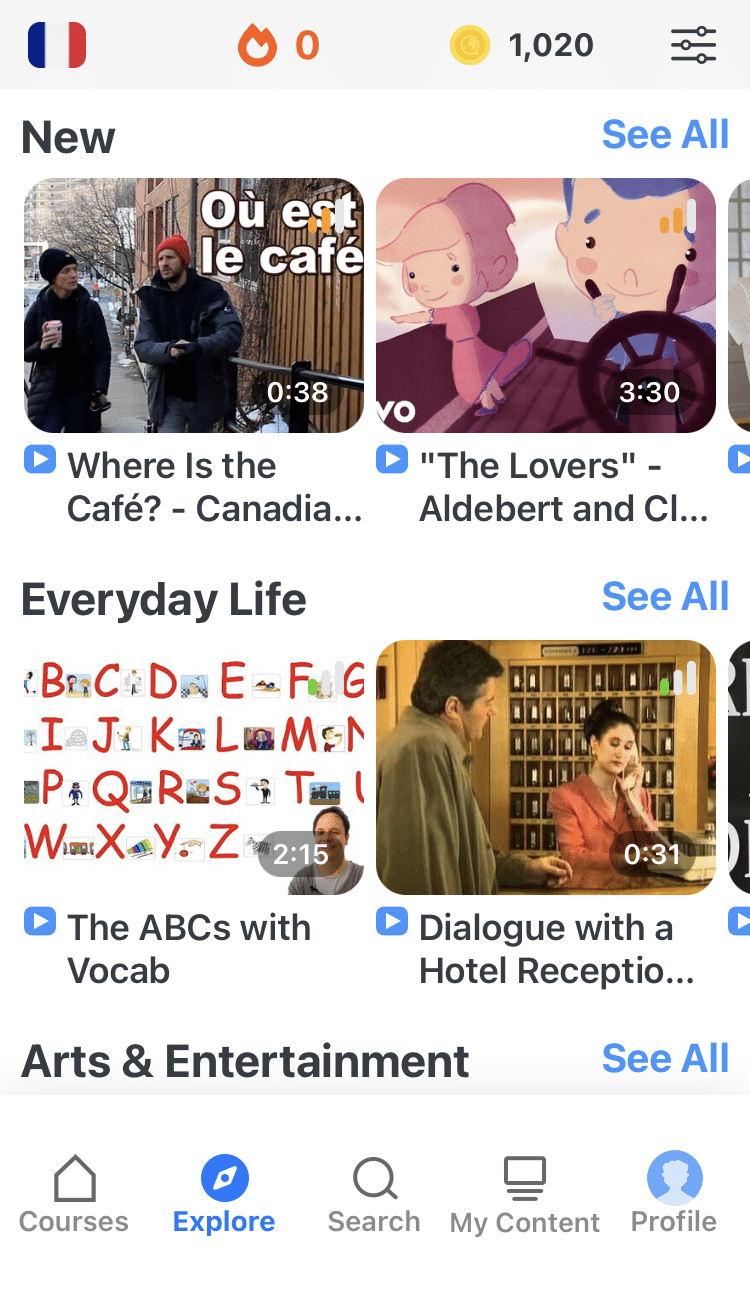
FluentU brings native videos within reach with interactive subtitles.
You can tap on any word to look it up instantly. Every definition has examples that have been written to help you understand how the word is used.
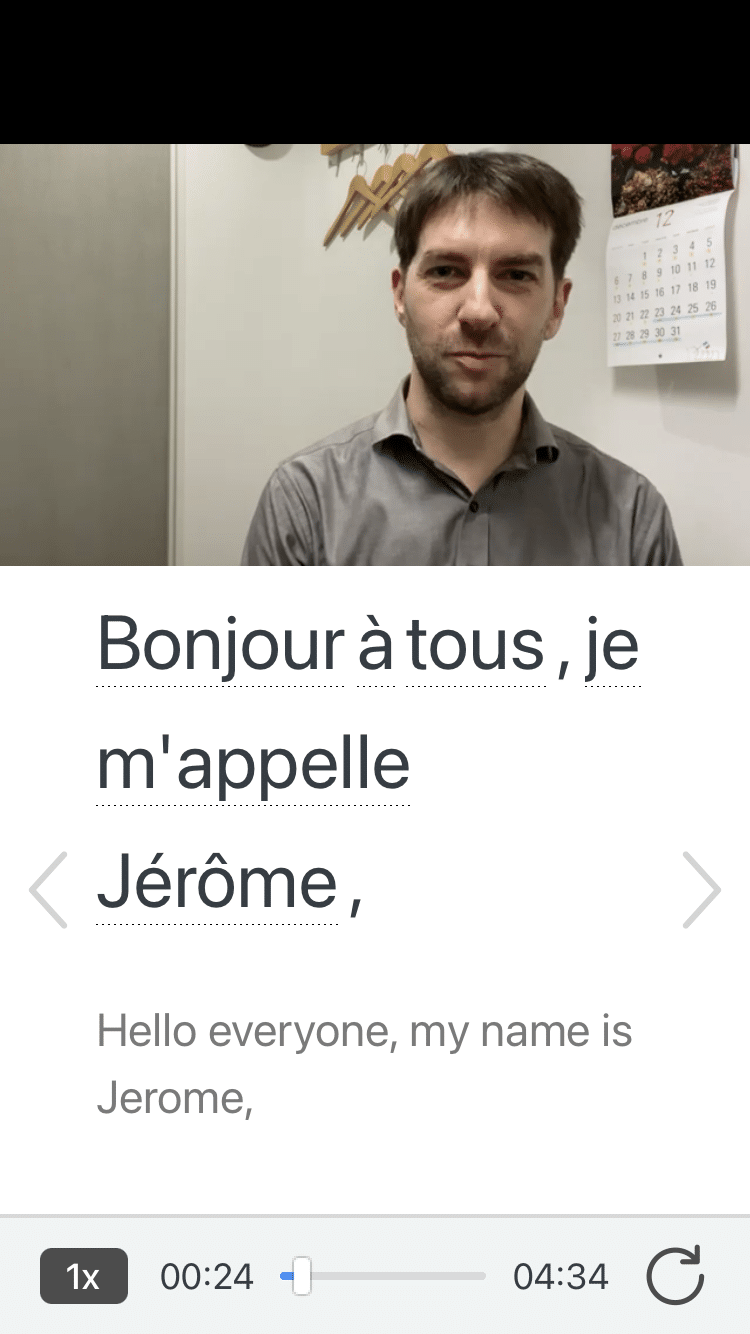
For example, if you tap on the word "crois," you'll see this:
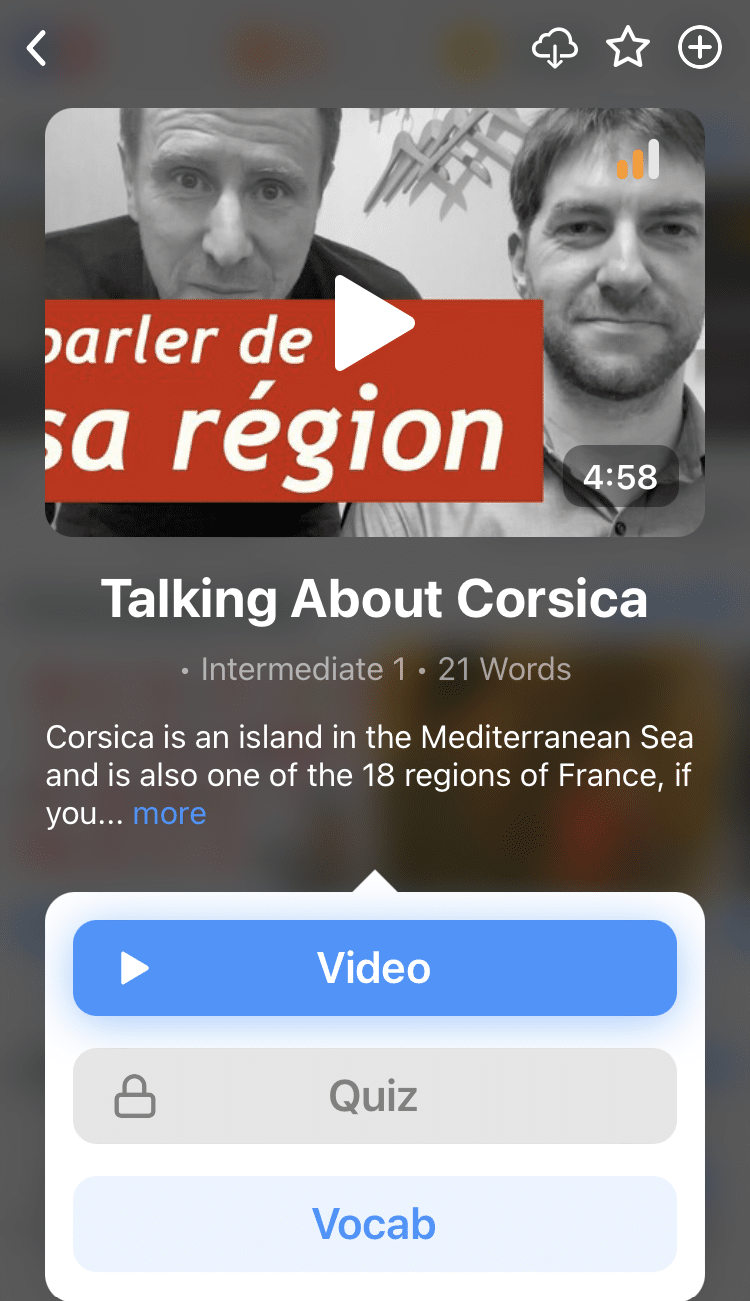
Practice and reinforce all the vocabulary you've learned in a given video with FluentU's adaptive quizzes. Swipe left or right to see more examples for the word you’re learning and play the mini-games found in the dynamic flashcards, like "fill in the blank."

As you study, FluentU tracks the vocabulary that you’re learning and uses this information to give you a 100% personalized experience.
It gives you extra practice with difficult words—and reminds you when it’s time to review what you’ve learned.
Start using the FluentU website on your computer or tablet or, better yet, download the FluentU app from the iTunes or Google Play store. Click here to take advantage of our current sale! (Expires at the end of this month.)
